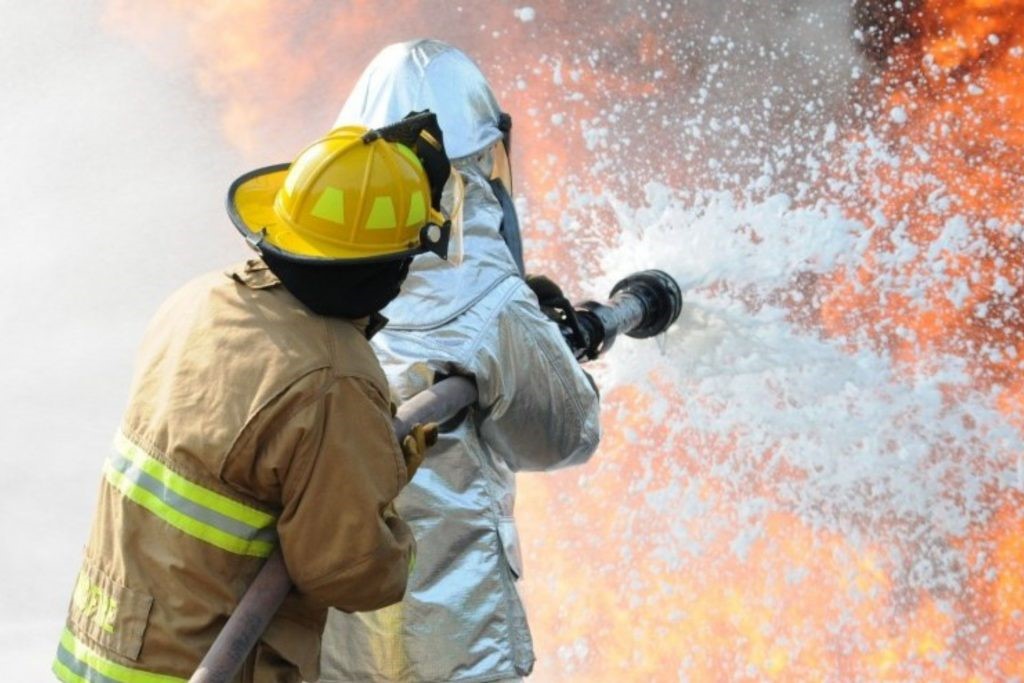Aqueous Film Forming Foam, or AFFF, is a firefighting marvel developed to tackle the most challenging blazes, especially those fueled by flammable liquids like oil and gasoline. It plays a crucial role in emergency response situations, saving lives and property where water alone falls short.
However, awareness of AFFF’s darker side has grown, prompting serious conversations about its safety. The chemicals within AFFF, particularly concerning their long-lasting impact on health and the environment, have led to numerous legal actions.
These AFFF lawsuits reflect growing concerns among communities and professionals about the safety of these products. As we explore its composition and usage, it’s crucial to understand the full scope of AFFF’s impacts, not just its firefighting prowess.
Composition and Use of AFFF
Aqueous Film Forming Foam (AFFF) is engineered with key chemical components known as PFAS (per- and polyfluoroalkyl substances), essential for its fire-suppressing capabilities. PFAS creates a barrier that cools the fire and cuts off the oxygen supply, smothering the flames. This mechanism is particularly effective against fires involving oil and gasoline, which are highly volatile and difficult to extinguish with water alone.
Common Uses
- Military Applications: AFFF has been a staple in military firefighting, used extensively on naval ships and airfields.
- Aviation Fire Safety: Airports use AFFF for rapid response to fuel fires in aircraft accidents.
- Industrial Settings: Factories and other industrial environments rely on AFFF to handle large-scale fuel fire emergencies.
This specialized foam plays a critical role in firefighting, particularly when traditional water-based methods fail. However, PFAS raises concerns due to their persistence and potential health risks, prompting a reevaluation of their widespread use.
Health Impacts of AFFF Exposure
Exposure to the PFAS (per- and poly-fluoroalkyl substances) chemicals in AFFF is linked with significant health risks. Understanding these dangers is crucial for those frequently exposed to these firefighting foams, such as military personnel and firefighters. Here’s a detailed look at the potential health impacts:
- Cancer: Long-term exposure to PFAS can increase the risk of several types of cancer, notably kidney and testicular cancer. These findings are supported by research that points to PFAS’s ability to disrupt normal cell functioning.
- Thyroid Disease: PFAS chemicals may interfere with thyroid hormone production, leading to various thyroid disorders. The thyroid’s critical role in regulating metabolism means any disruption can have widespread health effects.
- Immune System Impacts: Evidence suggests that PFAS exposure can weaken the immune system, reducing its ability to fight infections and possibly impacting vaccine effectiveness in children.
Several health agencies and research institutes have backed these findings with compelling evidence. Studies by the Environmental Protection Agency (EPA) and the Agency for Toxic Substances and Disease Registry (ATSDR) highlight the link between PFAS exposure and severe health outcomes.
Their research has been instrumental in understanding the full scope of health risks associated with AFFF exposure, prompting calls for tighter regulations and protective measures for those most at risk.
Environmental Impact of AFFF
The environmental toll of Aqueous Film Forming Foam (AFFF) extends far beyond its immediate firefighting benefits, mainly due to the persistence of PFAS chemicals. Here’s how AFFF impacts the environment:
- Soil and Water Contamination: When AFFF is used during firefighting training or in real emergencies, PFAS leaches into the soil and seeps into groundwater and surface waters. These substances are highly resistant to natural degradation, leading to widespread contamination of water supplies commonly used by communities.
- Long-Term Persistence: PFAS compounds are notoriously durable, resisting environmental breakdown. This long-term persistence means that once PFAS infiltrates an ecosystem, it remains for decades, continuously posing a risk to ecological health and safety.
- Bioaccumulation and Ecosystem Impact: PFAS accumulates in wildlife’s bodies, moving up the food chain and eventually impacting human health through contaminated food sources. Aquatic life, particularly fish, is severely affected as PFAS disrupts reproductive and developmental processes, leading to declines in fish populations and biodiversity.
The comprehensive impact of PFAS from AFFF on ecosystems underscores the urgent need for effective environmental management strategies and cleanup efforts to mitigate these long-standing pollutants.
Legal and Regulatory Responses
The repercussions of AFFF’s environmental and health impacts have led to increased scrutiny and spurred a series of legal and regulatory responses. Here’s an overview:
Across the globe, affected parties, including firefighters, military personnel, and local communities, have filed lawsuits against manufacturers of AFFF. These lawsuits claim that manufacturers knew about the harmful effects of PFAS but failed to inform the public, leading to widespread health and environmental damage.
In response to the growing evidence of AFFF’s risks, several countries and regions have implemented bans and strict regulations on the use and disposal of AFFF to prevent further environmental contamination and protect public health.
There is a concerted effort underway to develop safer, more effective alternatives to AFFF. Research teams are exploring innovative firefighting technologies that do not rely on PFAS, aiming to maintain firefighting effectiveness without the associated health and environmental risks.
These legal and regulatory actions represent a critical turning point in managing the risks associated with AFFF, reflecting a broader move towards safer and more sustainable firefighting solutions.
Conclusion
The use of Aqueous Film Forming Foam (AFFF) presents serious side effects that pose significant risks to human health and the environment. The persistence of PFAS in AFFF contaminates ecosystems, endangers wildlife, and increases the risk of disease.
Addressing these concerns requires a multifaceted approach: ongoing research to understand and mitigate the impact, stricter regulations to control use and disposal, and the development of safer firefighting alternatives. Collectively, these efforts are vital for ensuring future public safety and environmental protection.

